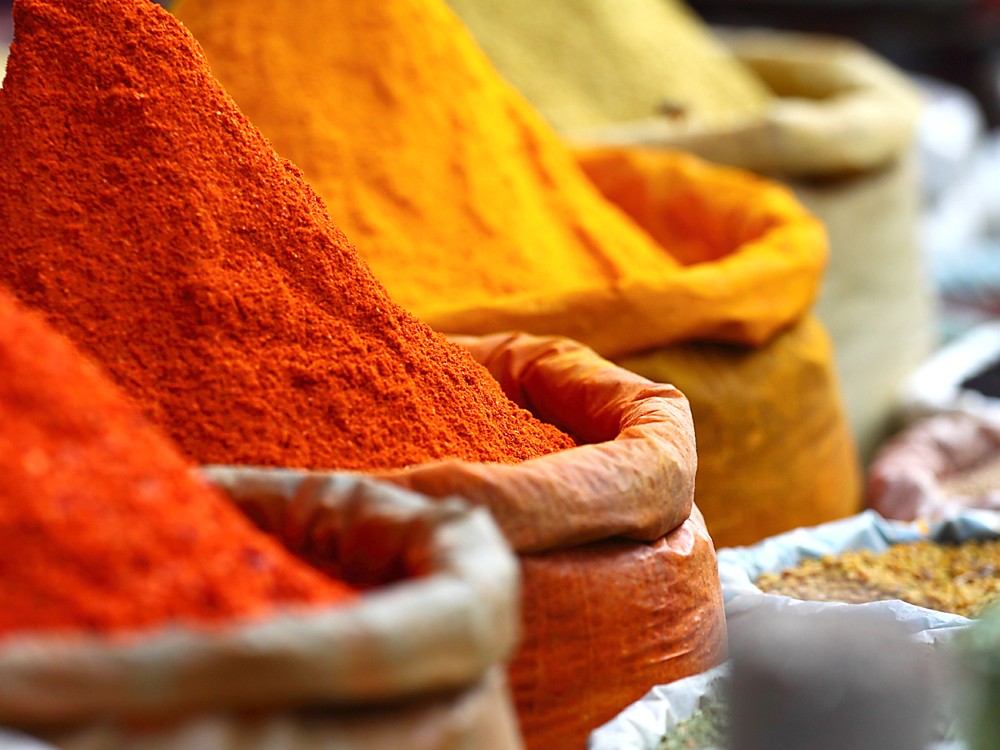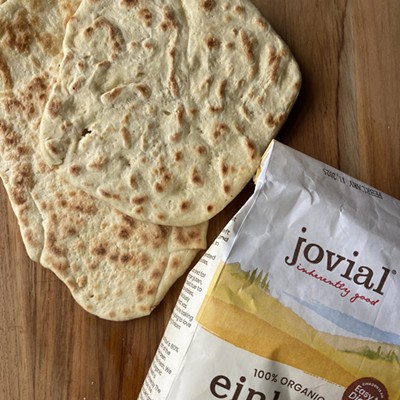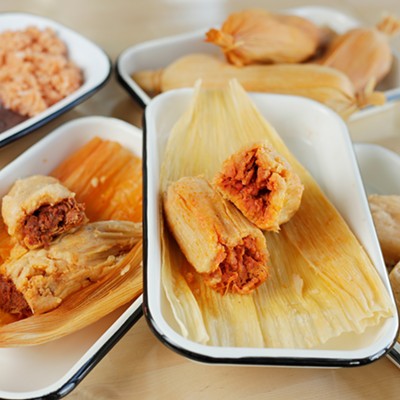Indian food is wildly different from hamburgers and apple pie, as one would expect from a country on the other side of the world. But many Indian recipes, especially from the country’s north, can be made with the ingredients of home. Consider the Punjabi recipe for palak gosht, meat with spinach, in which the only ingredients that need be imported are spices and ginger. All of these ingredients, including fresh spinach and fat animals, are in season right now, making palak gosht a great fall dish that can be as exotic as it is local.
Since the cow is sacred in India, beef is rarely eaten, but the recipe does work fine with beef. The most commonly used red meat is mutton, which can mean either sheep or goat in India. I make it with venison, since that’s what I have, and it turns out great.
Most Indian restaurants use lamb, or gosht, as in the version I use, which comes from a wonderful cookbook by Camellia Panjabi called 50 Great Curries of India. In addition to those 50 recipes, the author also delves deep into curry theory, with chapters devoted to “The Curry Picture,” “Making a Simple Homestyle Curry” and the ever-important question: “What Exactly is a Curry?”
Panjabi’s preparation of palak gosht begins with pureeing two big cloves of garlic with an equal part ginger, and two or three minced jalapenos. (They don’t have jalapenos in India, but they make do somehow.) The pureeing can be done with a food processor, mortar and pestle or any other means at your disposal. Thin this mixture with a little water, just enough to make it more of a puree than a paste. Loosen up 1/2 cup of yogurt with a whisk or fork and add it to the puree along with 1/4 teaspoon of cumin.
Cut a pound of the meat of your choice into chunks a little less than an inch square, and marinate the meat in the spiced yogurt for at least an hour.
Yogurt is often used in curry as a “souring agent,” something that all Indian curries contain in one form or another. Other souring agents, used in other curries, are vinegar, tamarind, lime, tomato and green mango. Yogurt is also considered a “thickening agent,” helping the curry achieve the right consistency (other thickening agents include onions, coconut, ground nuts and lentils). Wheat flour, the cookbook author explains, isn’t used as a thickener because it “has no flavor.”
While the meat is marinating, blanch a half-pound of spinach leaves for 10 seconds in boiling water, or 20 seconds in steam. Let the spinach cool. Puree, and set aside. You can double or even triple the spinach if you like, given spinach is in season.
Now the action really begins. Heat 1/4 cup of oil and fry two bay leaves, three cloves and two cardamom pods. Frying spices in oil extracts flavor from them. Fry the spices patiently, over low to medium heat.
When the bay leaves just start to turn brown, add a half-pound of chopped onions and fry on medium heat. Panjabi helps with the east-to-west translation of the recipe by noting that “in temperate climate zones, the onions will take longer to fry to a brown color as they have a higher moisture content” than the onions in tropical India. That means about 15 to 30 minutes to caramelize onions in temperate climates.
Once the onions have caramelized, add coriander powder (ideally ground fresh from seeds) and sauté for two minutes. Then add 1/2 teaspoon of cumin, and a little water to thin things out and prevent burning. Cook like this for a few minutes, then add the meat and its yogurt marinade, along with three chopped tomatoes — or the equivalent from your pantry or freezer. I use fresh tomatoes if I have them, otherwise homemade ketchup.
By now, as the flavor is starting to come together, the dish looks more like puked-up pizza with milk than cuisine, but that will soon change. Add 3/4-cup water and 1 teaspoon salt, and cook slowly for at least 20 minutes with very tender meat, but ideally for hours. Finally, add the pureed spinach, which transforms the color into an appetizing shade of green.
The book recommends serving this curry with an Indian-style flatbread, like chapati, or even naan or paratha made from that flavorless wheat flour. A thick flour tortilla — heated, of course — comes pretty close. As with the substitution of venison for goat, or homemade ketchup for chopped tomatoes in the winter, the flour tortilla brings the dish home to North America, where we have a soft spot for the subtle, earthy flavor of wheat flour, and we grow plenty of it.
To make perfect renditions of palak gosht all we need from India are the same spices that drew the early explorers in their sailboats. Now, as then, just a little special powder can turn homegrown ingredients into aromatic delicacies that sing of faraway places. It’s a delicious compromise between local and global.
















